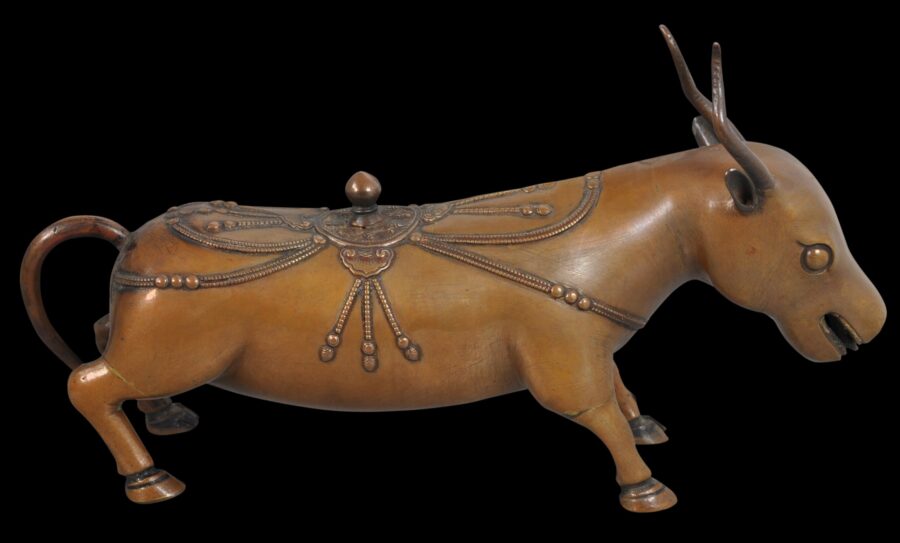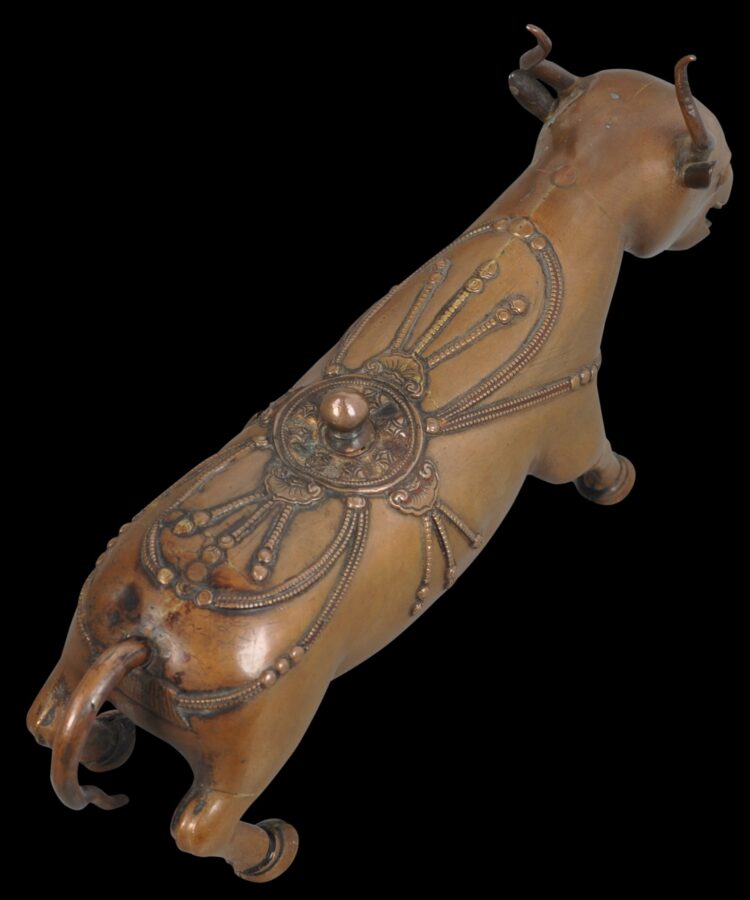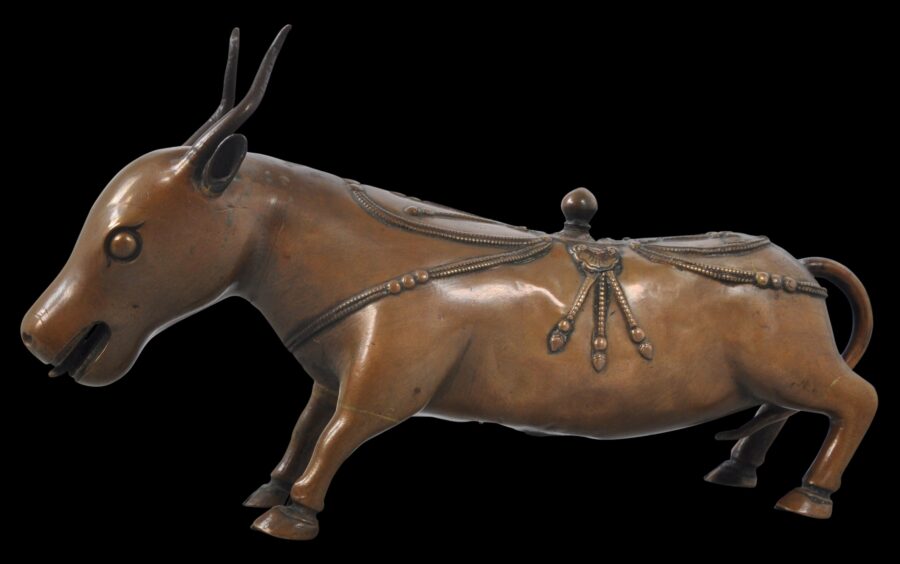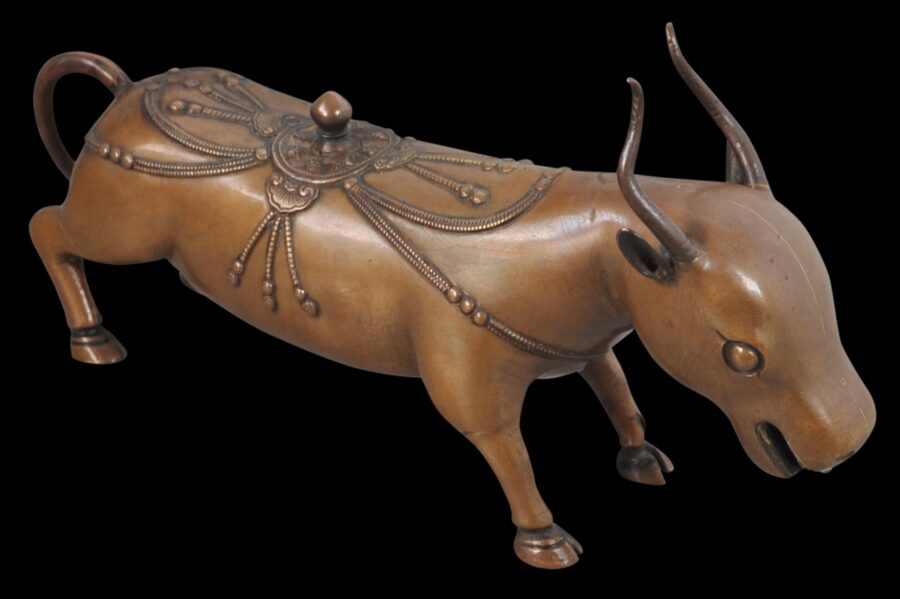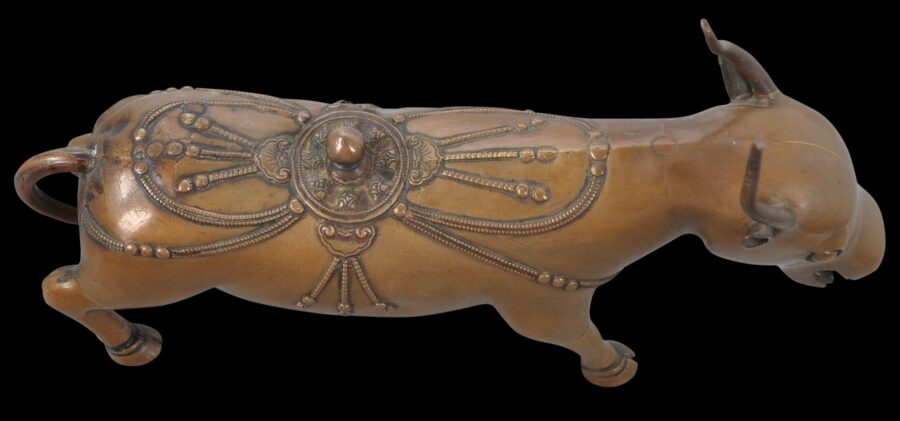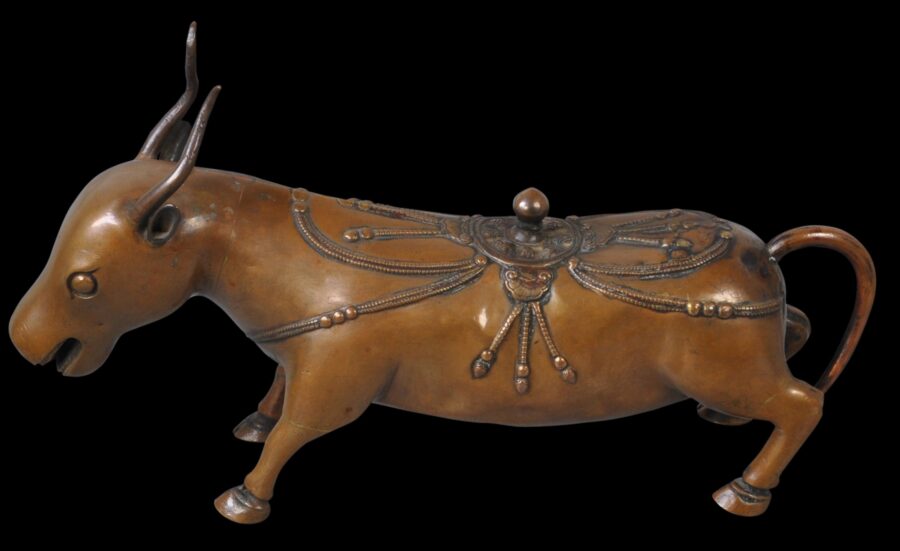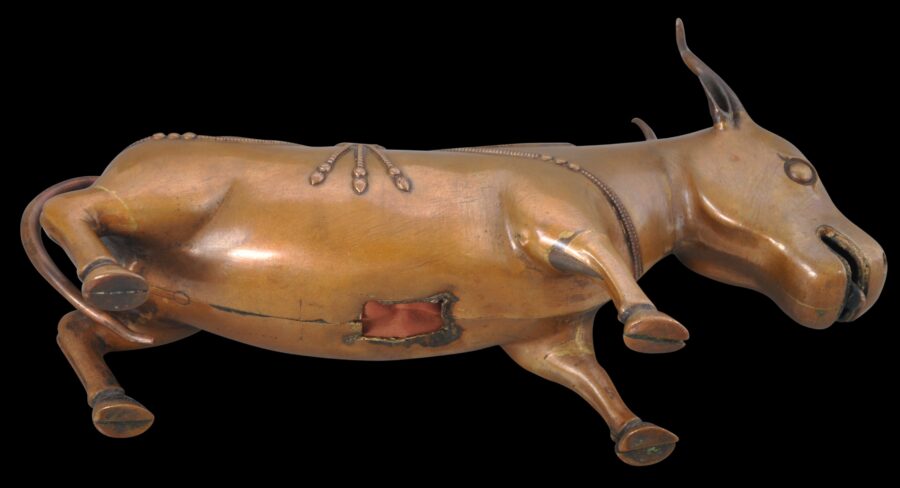This very finely made brass image is of the yak or bull mount of Vajrabhairava (Yamantaka), a deity who represents compassion in its fierce or angry form.
The deity typically is shown with the horned head of a yak or bull, and often is depicted astride a horned yak or a bull.
The yak mount here has an elongated body, a large head with a protruding tongue, a pair of thin, long horns, and a tail that correspondingly is long and thin, giving some balance to the sculpture.
The yak’s body is decorated with garlands or strings of ‘pearls’ as well as having a decorative saddle surmounted by a lotus-bus like finial. The strings-of-pearls motif is commonly used as decorative elements on Himalayan deities, their mounts and thrones.
Vajrabhairava is known as the ‘Lord of Death’ but there is benevolence in this apparent malevolence – Vajrabhairava stands for the destruction of death itself, and accordingly, Vajrabhairava sometimes is also called Yamantaka, or the defeater of death – a deity that can end the endless cycle of rebirth and provide a path to nirvana.
Vajrabhairava is the most popular tantric manifestation of Manjushri and was the most favoured protective wrathful deity of Tibet’s important Drepung monastery and for the Gelugpa sect in general.
The yak image here is in fine condition. There is a rectangular cut-out section on the underside which shows that the body of the yak is stuffed full of fine red cloth. Overall, the yak has a soft, brown patina. It is unusual and it is decorative.
References
Berger, P., & T. Tse Bartholomew, Mongolia: The Legacy of Chinggis Khan, Thames & Hudson, 1995.
Linrothe, R., & J. Watt, Demonic Divine: Himalayan Art and Beyond, Rubin Museum or Art/Serindia Publications, 2004.
Meinert, C. (ed.), Buddha in the Yurt: Buddhist Art from Mongolia, Vols 1& 2, Hirmer, 2011.
Pal, P., Art of Tibet, Los Angeles County Museum of Art, 1990.
Pal, P., Himalayas: An Aesthetic Adventure, The Art Institute of Chicago, 2004.
Rawson, P., Sacred Tibet, Thames & Hudson, 1991.


